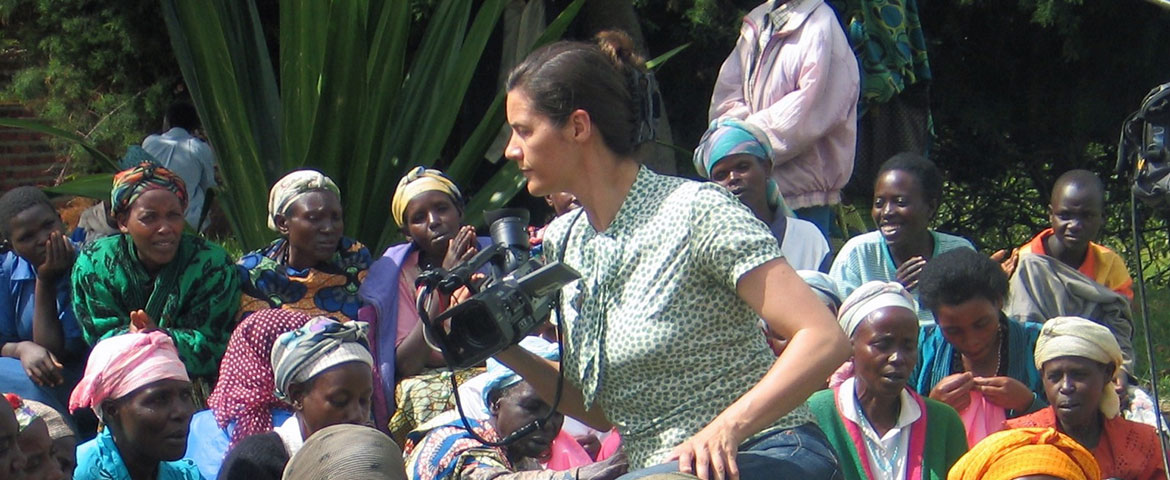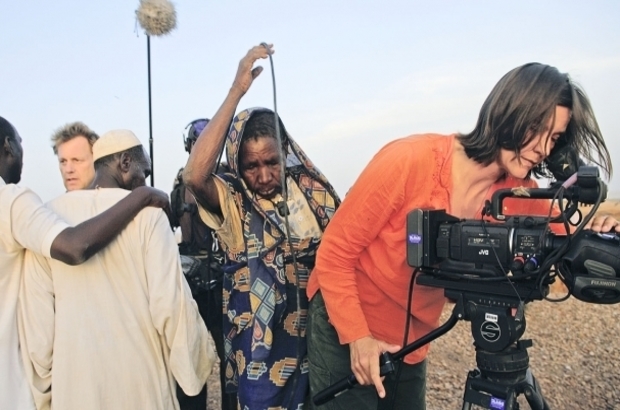NICK MASTRINI looks at Kirsten Johnson’s new autobiographical documentary about the nature of memory and perspective.
The beauty of documentary filmmaking is its serendipity — the moments when, by virtue of a filmmaker simply being present, the unexpected and inexplicable happens. The film Derrida (2002), with cinematography by Kirsten Johnson, begins with the French philosopher Jacques Derrida outlining his views regarding the present and the future. He sees two types of future: that which can be anticipated and ‘will be’, and that which is impossible to anticipate.
Of the latter, he says: ‘for me, that is the real future’. Derrida sees the present as the anticipation of the near future alongside the ‘retention’ of the recent past, continually unfolding relative to this balance between expectation and memory. Perhaps, having shadowed Derrida for weeks and tracking his errant thoughts, Johnson’s sense of time – so beautifully represented in her new documentary, Cameraperson – was spurred by the philosopher’s musings.
Cameraperson flits from nation to nation, experience to experience, all from Johnson’s perspective. The idea of retention is crucial to understanding the impact of every image: Johnson is in dialogue with her past self, returning to the instances of serendipity that stayed with her over the last twenty-five years. Every emotive moment accumulates into a narrative of a lifetime; the benefit of hindsight notes the significance of individual experiences within the bigger picture of a career. In Johnson’s case, a career behind the camera allows her experiences to be rewoven into an autobiographical narrative that recalls what was seen at first sight.

Meanwhile, Johnson’s retrospection also explores the morality of documentary filmmaking, of the camera’s presence in a real situation. A stunning scene sees a boxer lose a tight decision at the Brooklyn Center. Johnson’s camera tilts from the jumbotron screen to the reality of the ring below, before the disgruntled fighter storms out of the ropes, past Johnson and into the changing rooms. Johnson follows, unafraid of the boxer’s aggression and unpredictability. It is this unpredictability that Johnson desires to capture, despite the risks involved. The scene concludes with the young man finding solace in his mother’s arms – a stark counterpoint to his initial frenzy.

Johnson finds the themes at the core of each scene and connects memory to memory without any commentary, allowing the audience to infer what it all meant to the cinematographer. The theme of familial love, particularly mothers, abounds, and the reason why becomes clearer as Cameraperson unfolds: Johnson intersperses footage of her mother as she copes with Alzheimer’s, adding greater significance to the images of motherly love. An incredible scene in Nigeria sees a midwife revive a newborn with limited oxygen. The camera lingers, depicting the quiet assurance of the nurse and Johnson’s nervous utterances behind the camera, highlighting the tension between her role as a cameraperson and a human being.
This tension finds an almost comic presence in a scene in Bosnia, as a young child plays with an axe with startling recklessness. This is part of another consistent thread that follows Johnson’s experiences in post-war Bosnia, where her relationship with a rural family affirms the power of documentary film in capturing the impact of history on humble individuals and communities. Towards the film’s conclusion, she returns to the family to show them footage of their younger selves, and its purpose in her documentary. In response to this time capsule, the family’s gratitude is clear. It is gratitude for a career that has captured the inexhaustible variety of life, though Cameraperson captures one life – Johnson’s – with equal elegance.
‘Cameraperson’ was released in the UK on 27th January 2017.
Feature image courtesy of doubleexposurejournal.com





